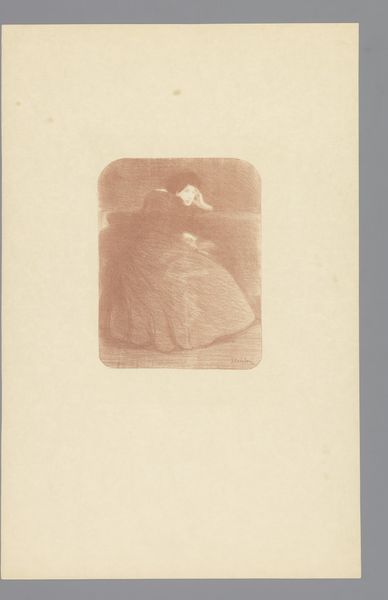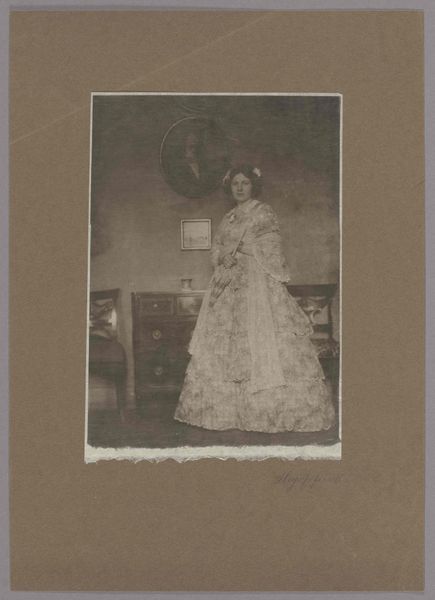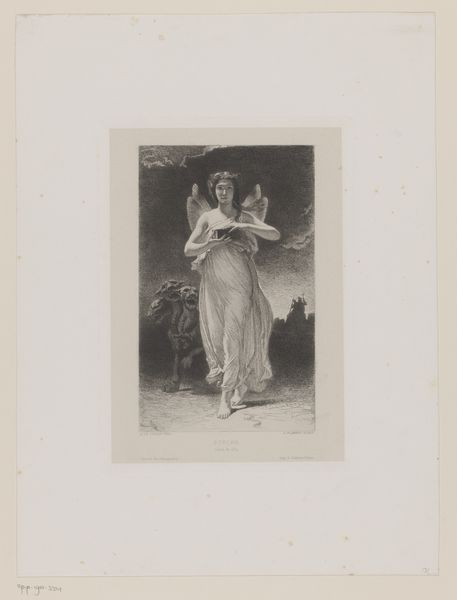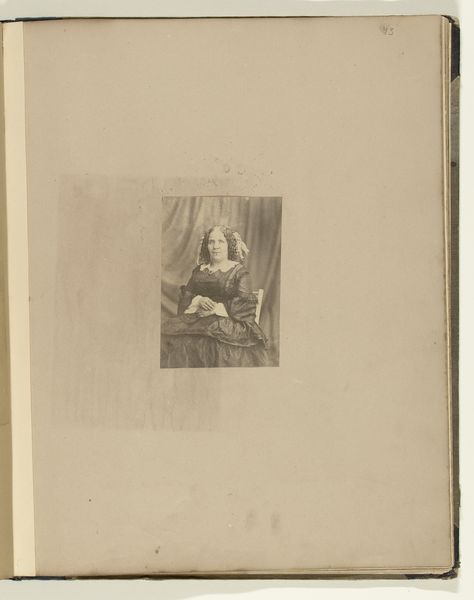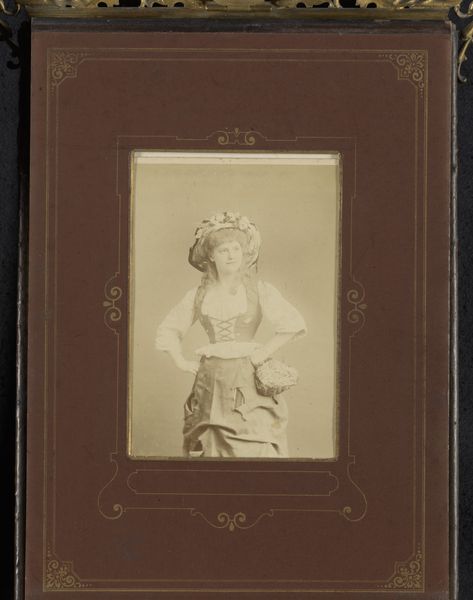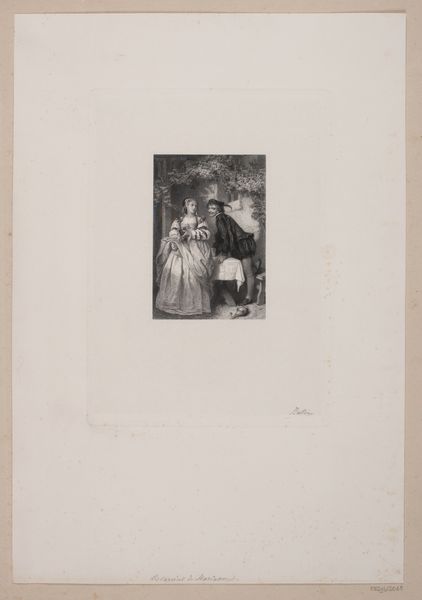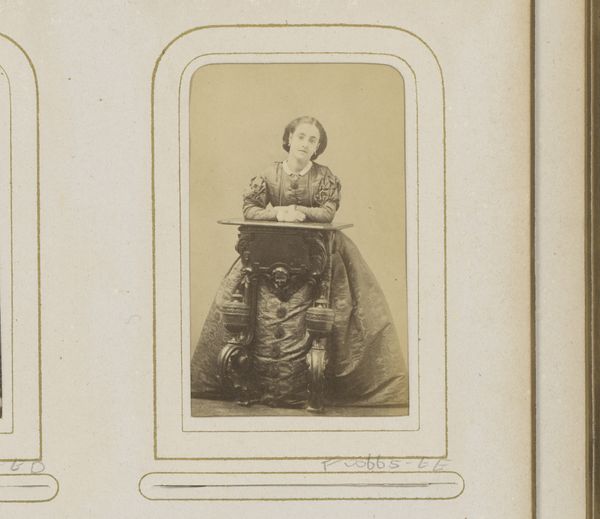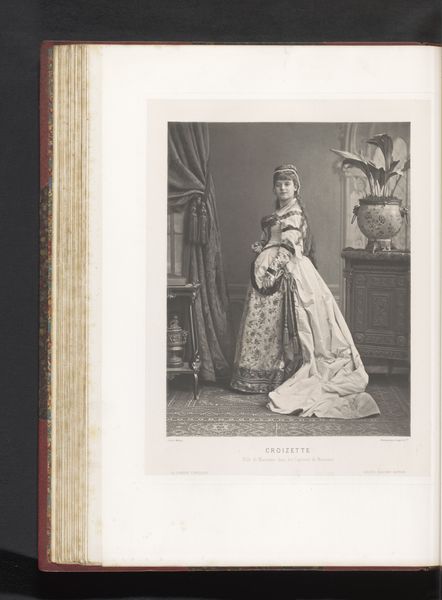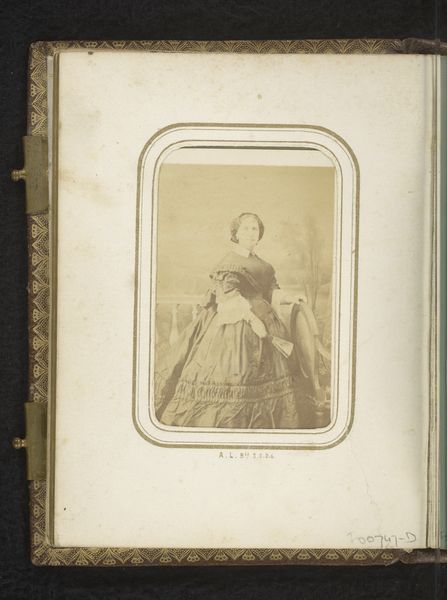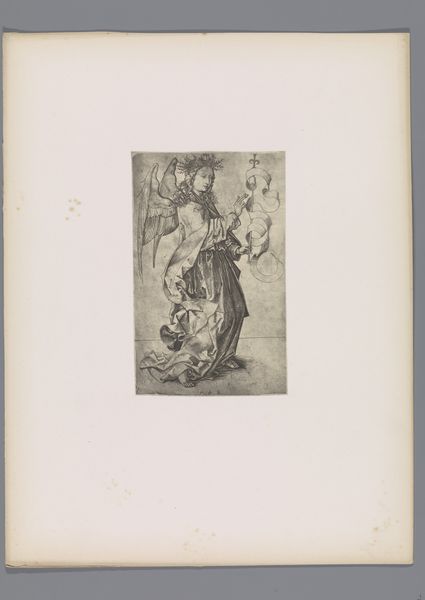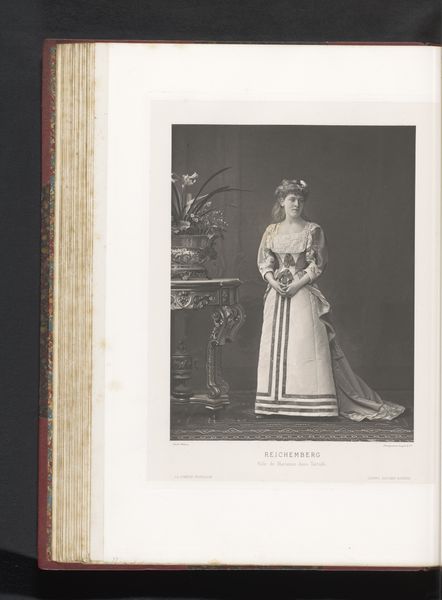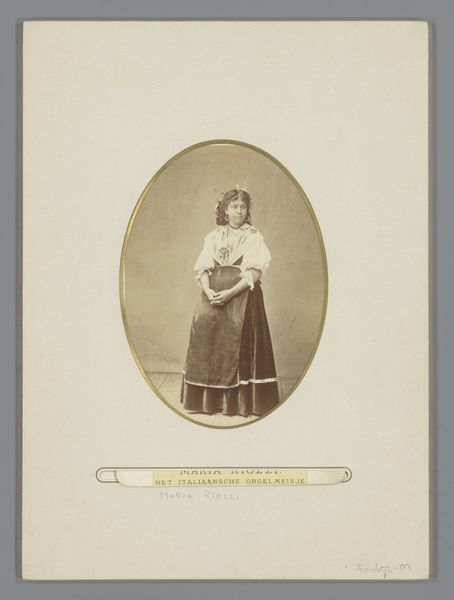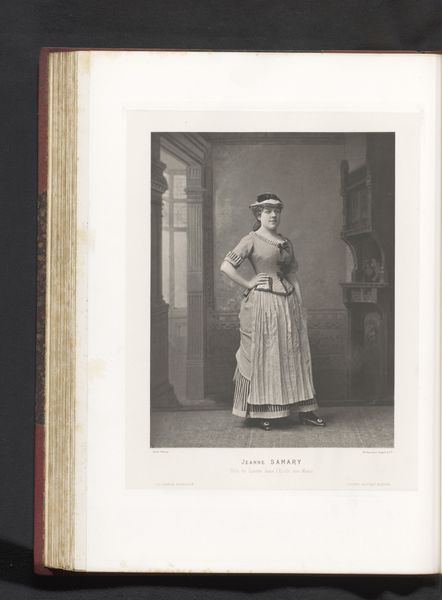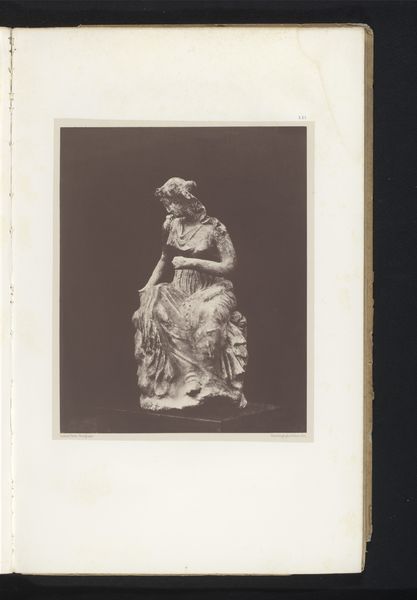
photography
#
portrait
#
photography
Dimensions: height 163 mm, width 108 mm
Copyright: Rijks Museum: Open Domain
Curator: Here we have "Portret van een staande vrouw in toneelkostuum in bosdecor," a photographic portrait created by A. Eichenwald sometime before 1889. Editor: The sepia tones give it a distinctly nostalgic feel, and the theatrical backdrop certainly contributes to a sense of artifice. Curator: Indeed. Examining this photograph within its social context, we must consider the burgeoning theatrical scene and the accessibility of photography as a medium. Eichenwald capitalizes on both, producing not just a portrait, but a document of theatrical culture. Editor: Precisely. And from a formal perspective, observe how the artist arranges the elements to guide the viewer’s eye: the diagonal of the rocks mirroring the tilt of the woman’s posture, her placement almost dead-center, all constructing a very balanced, albeit staged, composition. Curator: That balance speaks, perhaps, to the cultural emphasis on composure and decorum. The production of these photographic portraits democratized representation, shifting portraiture away from exclusively painted images commissioned by the wealthy elite, opening up forms of social visibility. Editor: An important observation! Considering it’s a posed portrait against a backdrop, the tonal range provides some depth to the stage set. What's interesting, and I wonder about its success, is the attempt at naturalism by incorporating foliage on the set. Curator: We might consider how the photographic print would be distributed; what sort of labor would go into producing it? Whose consumption patterns supported Eichenwald's artistic enterprise? The answer lies partly in understanding the economics of early portrait photography studios and the value assigned to this new mode of capturing identity. Editor: From my viewpoint, it encapsulates an era when art was on the cusp of modernity. It's sentimental, romantic, even—but one sees glimmers of theatrical expression within a controlled frame. Curator: Absolutely. It invites reflection on the performative aspects of identity in that era. Editor: Yes, a study in posing! Curator: I see it as a fascinating artifact illuminating the socio-cultural conditions surrounding both photography and theater. Editor: I'm content to see how carefully considered its formal elements are and how much that gives the piece its expressive depth.
Comments
No comments
Be the first to comment and join the conversation on the ultimate creative platform.
